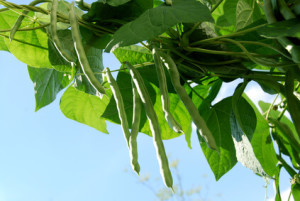 Legumes are some of the mainstays of farmers in East Africa and as such none beats Kenya fresh beans for versatility, intercropping benefits and supplementary role as a high protein source in the absence of animal products. Indeed, many family growers not only grow their beans for sale but as a source of vital protein, which nutritionists say surpass some meat products. If this is so, then are all beans the same? Can you improve yields or enrich that single cup to increase the nutritional content per 100g worth of protein?
Legumes are some of the mainstays of farmers in East Africa and as such none beats Kenya fresh beans for versatility, intercropping benefits and supplementary role as a high protein source in the absence of animal products. Indeed, many family growers not only grow their beans for sale but as a source of vital protein, which nutritionists say surpass some meat products. If this is so, then are all beans the same? Can you improve yields or enrich that single cup to increase the nutritional content per 100g worth of protein?
First of all, you ought to know which beans eventually turn out the greatest volume of protein content before delving on organic methods to boost their yield. Among all legumes, soybeans have the highest protein content, providing 39.6g for every 100g of nutritional composition, which translates to 36.8g for each cup (where a cup should contain a volume of 93g). The above statistic is possible only when you roast your soybeans. In fact, boiled soybeans have lesser protein at 16.6g per 100g worth of mineral composition, which is still worth your while even after much of the minerals go into the boiling water.
In Kenya, kidney beans, red beans and pinto beans are popular delicacies for providing that bodybuilding nutrient whenever meat becomes pricey or scarce. It is great to know that when cooked, kidney beans provide protein worth 8.7g per a hundred grammes of bean components. This is almost the same amount with the black variety under the official name, Frijoles Negros) which comes with 8.9g when cooked. The dotted, good-looking, cranberry beans, on the other hand, provide a composition of protein worth 9.3g per a hundred grammes, when laid on the dinner table, thus making them a delicacy worth going home early for!
Now, how do you boost the protein content in your beans? Because it is not scientifically feasible to add natural ingredients in produce other than by boosting their quantity, the easiest path to garnering more protein from your Kenya fresh beans is to propagate them via organic farming.
Inoculation
One such example is to inoculate your beans during the planting season. This is a method in which you mingle the seeds with a beneficial bacteria that actually fixes nitrogen into the legumes and thus adding more of this mineral into the crop throughout its growth period. Rhizobium, as the bacteria is called, also injects more nitrogen onto the soil through the agency of the bean crop which will automatically transfer to the next crop. Not only will you have a bumper harvest, but the beans will be healthy to sample.
Intercropping
Speaking of intercropping, beans are the most beneficial crops to plant together with others, be they grains like maize or fellow legumes like soya because they fix the soil and improve the yield of other crops. However, for these legumes to ping back results from the soil just as they transit benefits to others, it is a recommendation to plant them in a field where other plants have been after leaving the field for at least a year in order to acquire mineral anew from the abandoned fields.
The Best Organic Growth Conditions
The best organic places for growing Kenya fresh beans include low altitudes, even though beans can still do well in hilltops, with a neutral supply of both water and sunlight. Rainfall level ought to be in the range of 750 to 2000 millimeters annually. Little more or much more than the above these levels and the growth may be hampered. Drought is also a no-go zone for these protein-giving plants and thus the need to keep a watch out for low water and choose irrigation, instead.
In summation, it is never too late to make your beans pay back in time whether for sale or for household use by propagating them naturally, using organic farming trends like inoculation, providing proper spacing and trying new varieties.
Kenya Fresh Beans always sources from the best Kenya beans family growers.

